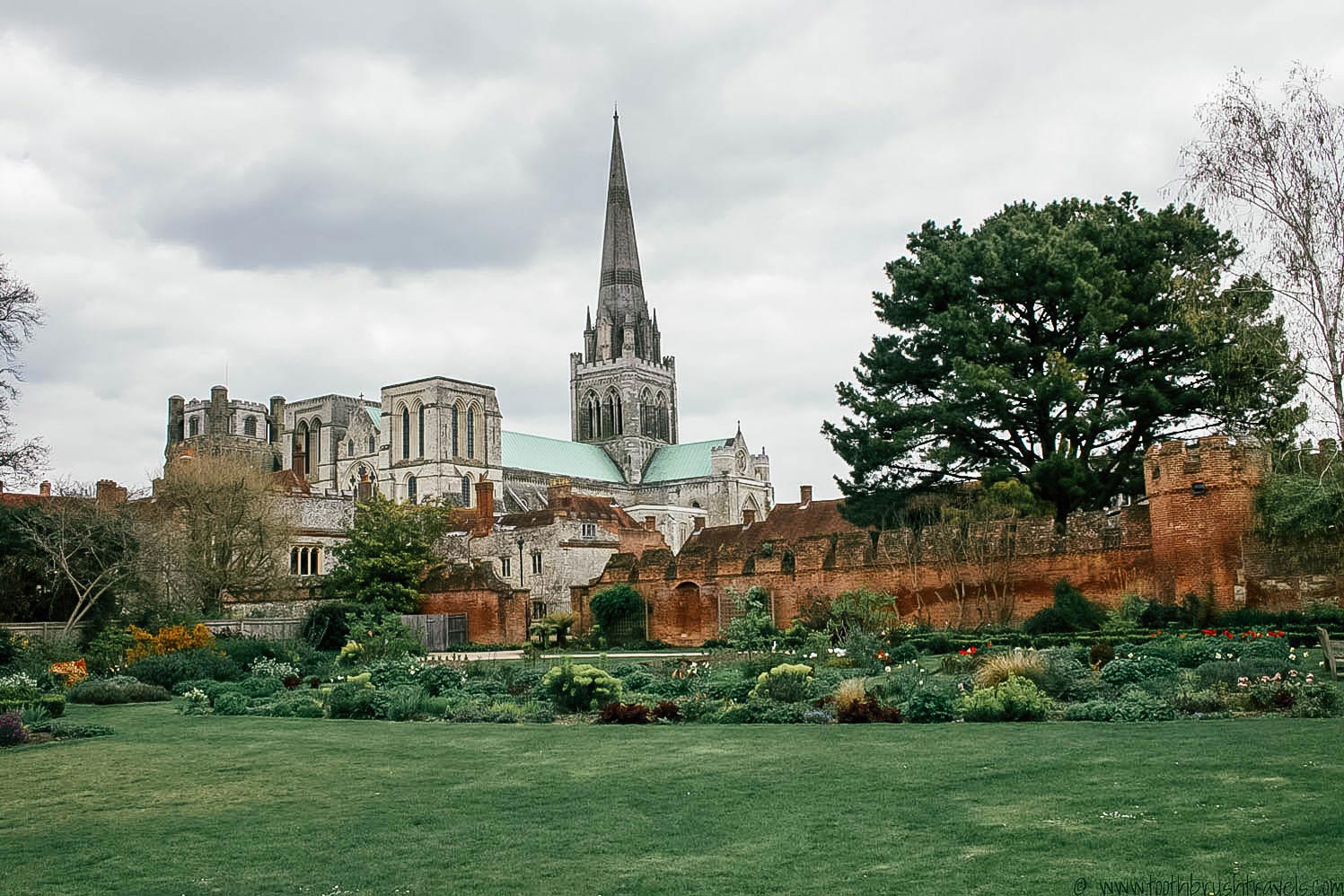Things have been quiet on the blog lately and I hate that, but the truth is I’ve been busy stuffing my face with various friends at their various houses and also because Chichester is sorta kinda incredibly boring in winter. It’s undeniably beautiful but due to its small population and countryside location, when the seasons change and things get cold a great deal of places close and many of the others aren’t that enjoyable when it’s freezing degrees outside.

But winter is over, places are reopening and I’ve actually started carrying my camera around with me again. The other day I was wandering around and I realised, you cannot deny that whilst Chichester may occasionally be a little boring, it is completely charming and absolutely steeped in history.
It’s all around you. Literally. Something I realised as I took a while around Chichester’s walls.
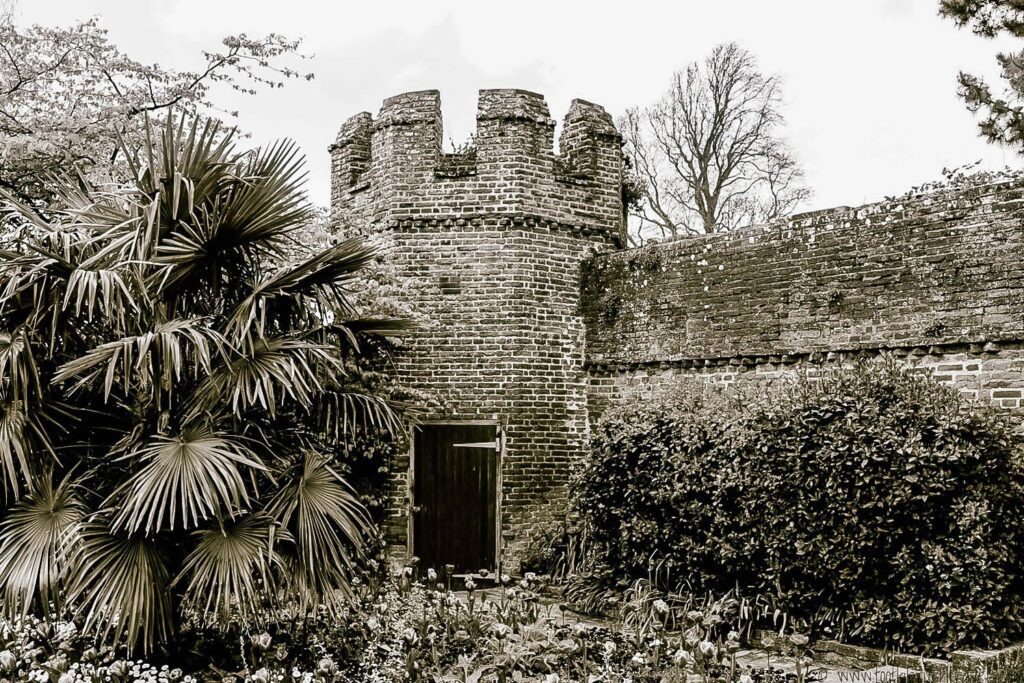
Chichester (original name: Noviomagus Reginorum) was first used when Roman military forces landed along the south coast in AD43. They set up their base in Chichester and Fishbourne but soon left to join the front lines in the North and West during the invasion. The little ol’ town of Chichester that they left behind, however, flourished for 200 years and after those 200 years it was decided, with the Emperor’s approval, that Chichester should be enclosed.

It was an expensive and time-consuming build, but you know, without the internet and stuff to distract them they had plenty of time, so the masonry walls were soon completed. The walls circled the town and just outside of the walls, a moat did the same, with the dirt removed for the moat being added to the inside of the walls as a rampart. Gates were added (North, South, East and West) and in the late 3rd and early 4th century, it was decided that bastions should be added to the walls to increase security.

It was an expensive gamble that came at the cost of the local economy but it was one that they felt was worth it for the hope of the town’s long-term survival. But as the 4th century progressed things got worse for Roman Britain. The walls withstood well and the Roman’s plans of getting everyone behind the walls (so they could close the gates and wait for the cavalry) worked well.
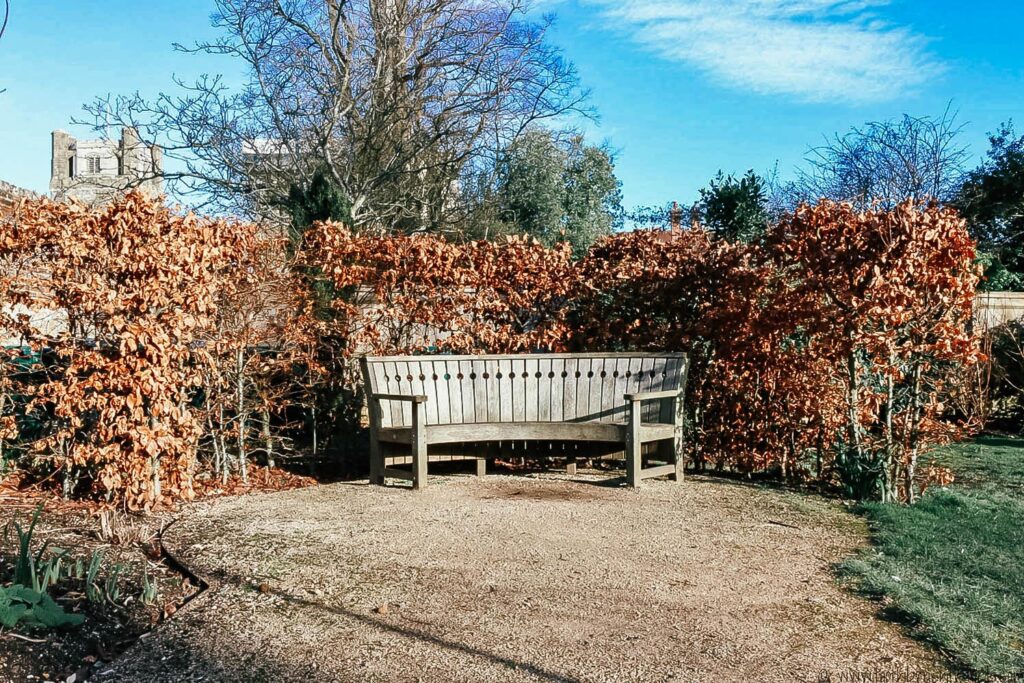
But the Roman troops were gradually being taken from Britain to defend other parts, and in AD 410 Emperor Honorius told British authorities that they were on their own. This move left Britain defenceless and unorganised and it presented the Anglo-Saxons with the perfect opportunity. The Anglo-Saxons began arriving in large numbers along the south coast but it was noticed that they had little interest in the towns and commerce, with their preferences laying in living off the land, and it wasn’t long before the Romano-Brits too abandoned Chichester to live off the land.
In just a few years Chichester became unrecognisable.

The streets were covered in vegetation, and rubble and as a result became impassable. The buildings that remained were shells of their former selves and the bastions were crumbling. For 450 years people avoided Chichester, with only squatters and those that wished to bury the dead visiting. But then came along King Alfred the Great. He saw the potential in Chichester, despite its crumbling defences and overgrown town and he said, “I can totally renovate this joint.”
It took him and his merry band of DIY-ers a good few years, but with the vegetation removed and the defences restored Chichester was once again reborn. It became a religious and financial centre and when The Royal Mint (Which is not an extremely tasty breath mint, but the institution behind coin and medal making) was established, the population grew to around 1500 people. (Which would have made for a much funnier story – if The Royal Mint was a breath mint and the population grew due to good dental hygiene).
But it wasn’t long before they got in trouble with the neighbours.
In 1066 in the battle of Hastings King Harold was defeated by William the Conqueror. The Anglo-Saxons could no longer sit with us, and we were all about the Normandy rule. The English aristocrats were out and were replaced by Norman Lords including Roger Montgomery who was given most of West Sussex. But then decided that owning most of West Sussex wasn’t quite flashy enough so he built two castles. One in Arundel, and the other in Chichester; which used those walls that I keep banging on about, as part of its enclosure.
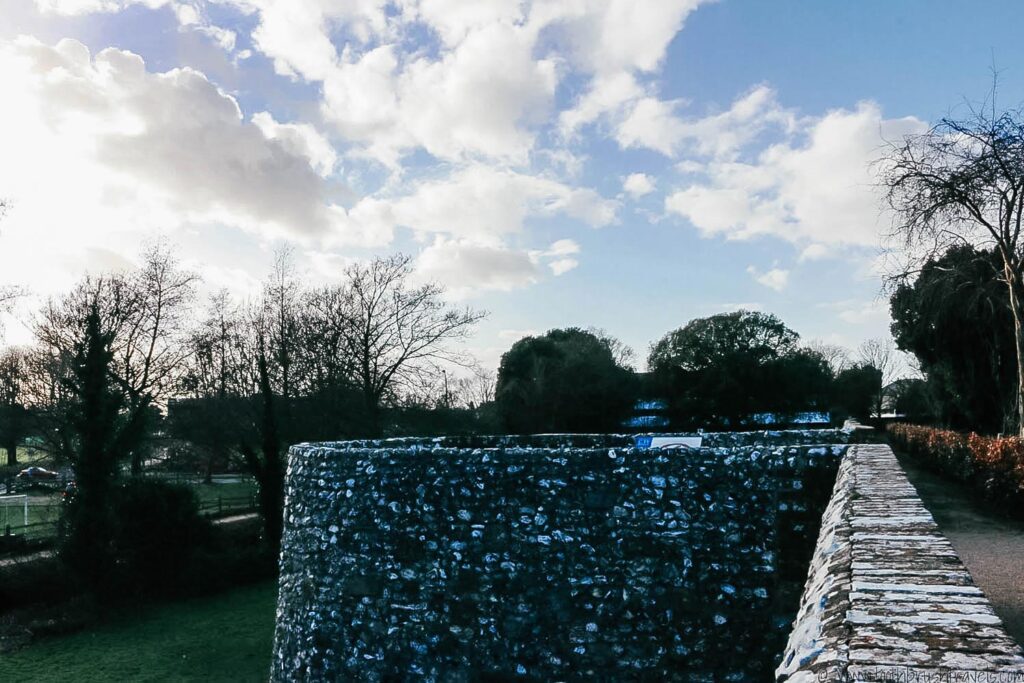
Chichester received civic status after becoming the market centre for West Sussex and in the years that followed it became one of the most important cities on the south coast. But with things a bit iffy between England and France the walls were constantly repaired and maintained to eliminate their vulnerability.
In 1642 the ol’ great walls of Chichester were needed for the last time as they were called to defend the city. The country was torn between King and Parliament and Chichester was divided. With the cathedral and people of status supporting Team King, and the common people supporting Team Parliament, it was on like Donkey Kong. Except not. Because Donkey Kong hadn’t been invented yet.
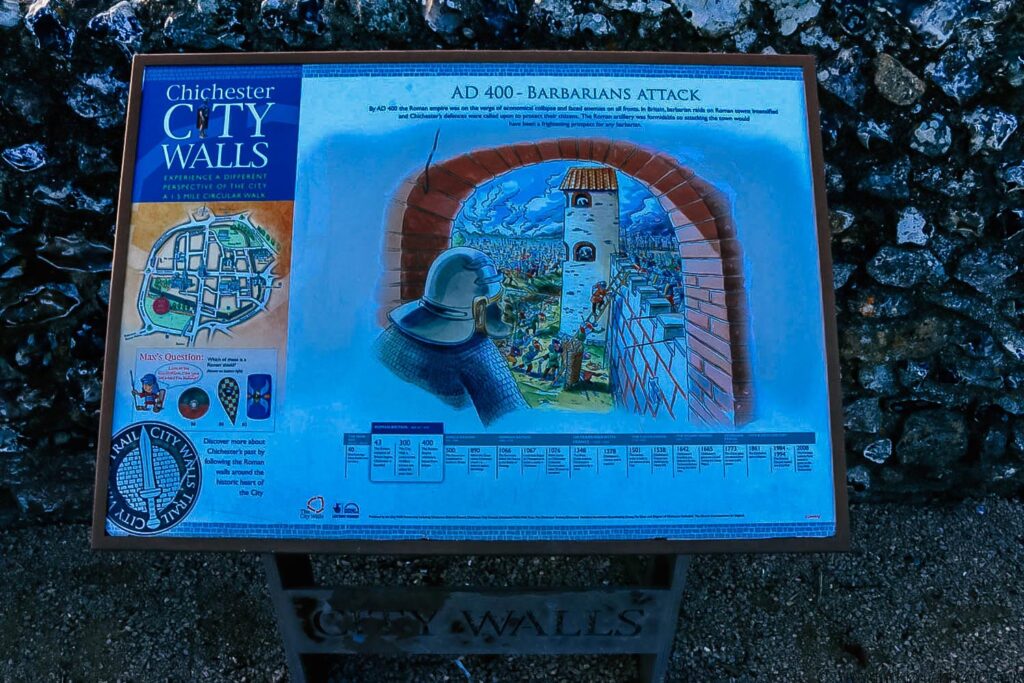
It started in favour of Team Parliament, but after a successful coup, Team King seized control. General William Waller was NOT happy about this so he marched Team Parliament to the edge of Chichester and camped on the Broyle, north of the city and decided to cause an artillery bombardment. It went all out with leather cannons hauling ass to the top of St Pancras church to fire at the East gate. William Waller was in a full-blown strop that the cathedral hadn’t backed Team Parliament so the cathedral precinct bore the brunt of both his strop and the gunfire.

It was the last time that Chichester walls were used for defence and in the 18th and 19th centuries Chichester was back on the map.
New houses were built and the city’s gates were removed to improve access and ease traffic congestion. It was the first time that the circuit of the wall had been split since it was built by the Romans. A move that I’m sure *ahem* some people are more than slightly annoyed about because having a complete wall around Chichester would have been pretty epic, and also pretty dang useful, should the zombie apocalypse ever happen.

Luckily the council saved the walls from being completely demolished and instead planted some pretty trees along the promenade for the residents. Since then not much has changed to the walls, except in 2009 when the Chichester District Council and Heritage Lottery fund enabled a thorough archaeological investigation and discovered the full history of these walls, making it a trail through the city with plaques and information panels scattered along the route.
It’s strange to think that no matter where you’re sitting now, reading this, the land beneath you has such a large history.
